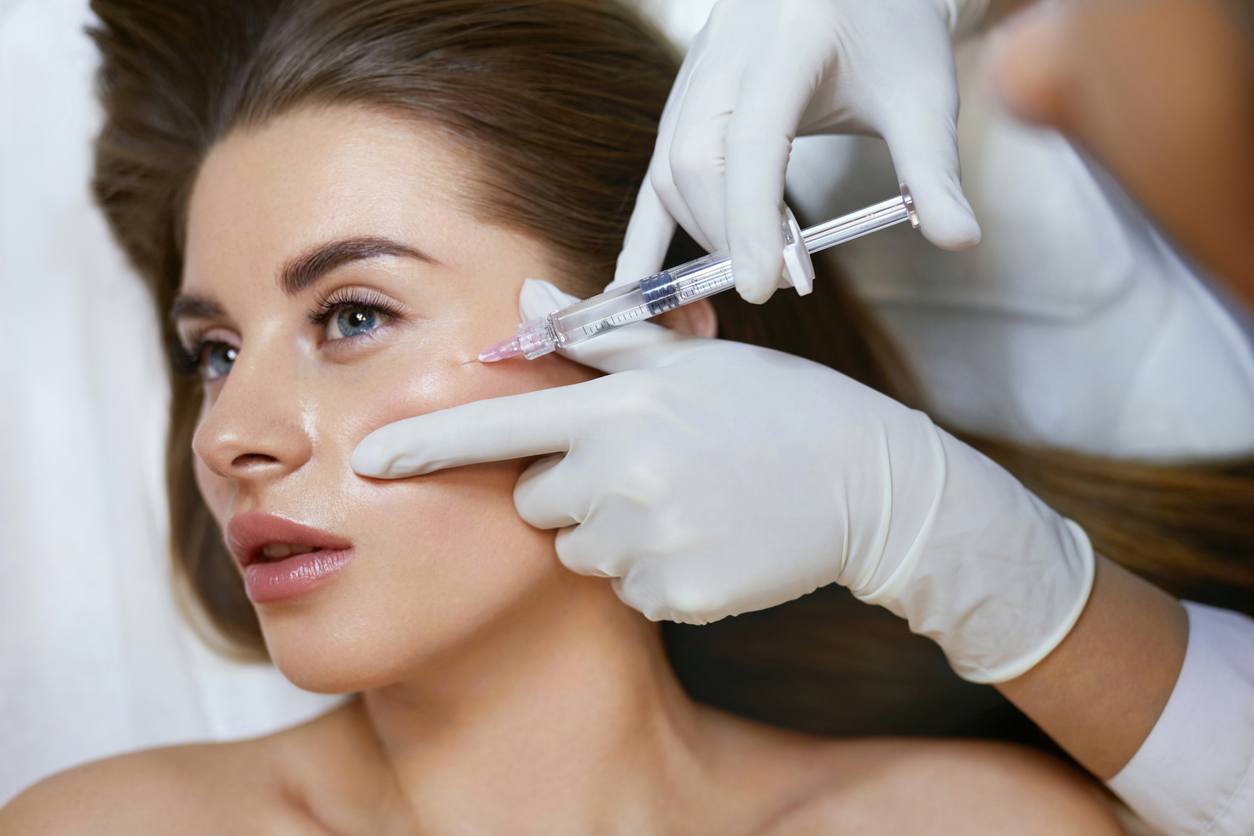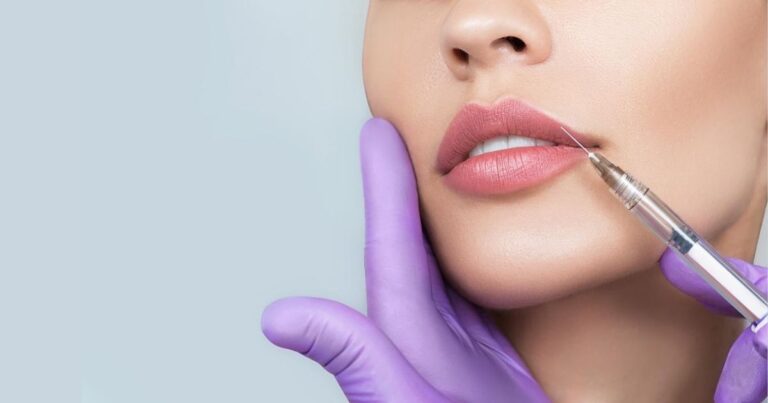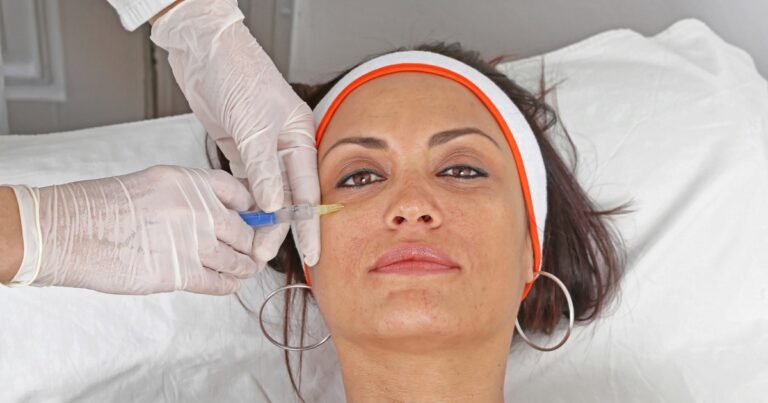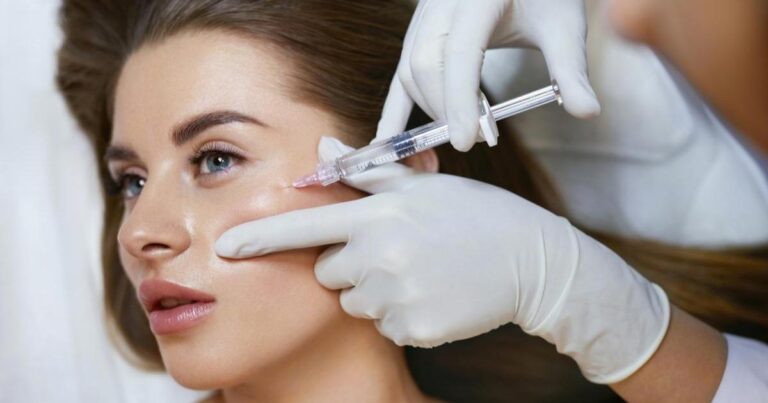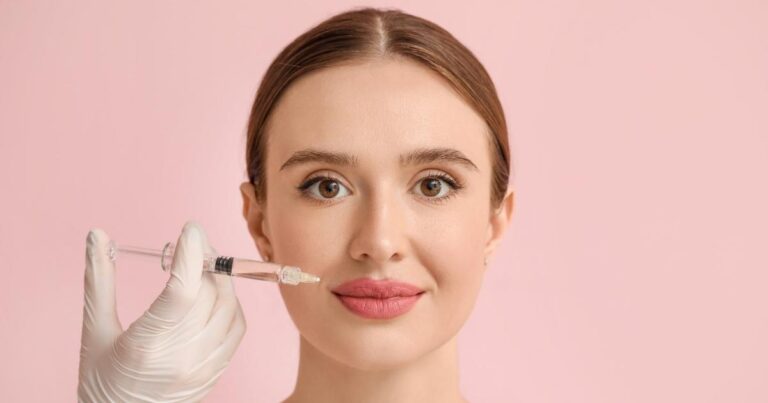“What is Filler Treatment?” is a question many ask when exploring cosmetic enhancements. This comprehensive guide delves into the world of fillers, shedding light on their types, uses, and benefits. Designed to inform and guide, it offers an in-depth understanding of how filler treatments can rejuvenate and enhance one’s appearance, aligning with various aesthetic goals.
What Are Dermal Fillers ?
Dermal fillers are injectable implants used by cosmetic surgeons and dermatologists to add volume under the skin. They can:
- Smooth out facial wrinkles and fine lines
- Plump up and enhance your lips
- Add fullness to hollow cheeks or temples
- Contour facial features like the chin, nose, or jawline
Dermal fillers contain hyaluronic acid, a naturally occurring substance in the body that retains moisture and adds volume under the skin.
Benefits of Dermal Fillers
- Non-surgical treatment
- Little to no downtime
- Immediate, visible improvements
- Minimal discomfort
Types of Dermal Fillers
There are several types of FDA-approved hyaluronic acid fillers:
Book A Consultation With Dr Tarek Bayazid
Top-rated Plastic Surgeon For Fillers in Dubai
Installment Plan Available
- Juvéderm
- Restylane
- Belotero
- Sculptra Aesthetic
The choice depends on the treatment areas and desired results. An experienced cosmetic doctor will recommend the most suitable option.
What Is Filler Treatment
Filler treatments are injections used to temporarily plump up facial skin and fill in lines and wrinkles.
- Common filler types : hyaluronic acid, calcium hydroxyapatite, poly-L-lactic acid (Sculptra)
- Works by adding volume under the skin to lift and smooth facial wrinkles
- Results typically last 6-18 months, depending on the area treated and the type of filler used
- Common treatment areas : smile lines, marionette lines, nose-to-mouth lines, cheeks, lips
- Potential side effects include swelling, bruising, lumpiness, and allergic reaction in rare cases
Who Is a Good Candidate for Fillers?
Fillers can benefit men and women of any skin tone or ethnicity. Good candidates are people who want to:
- Softens moderate-to-severe wrinkles and lines
- Adds volume and fullness to the face
- Enhances and plumps up lips
- Corrects minor facial asymmetry
Fillers can be effective for those with early signs of ageing up to older individuals who want to restore facial volume.
Ideal Candidates Are People Who Want To:
- Soften forehead lines
- Reduce under-eye hollows
- Plump thinning lips
- Add projection to the chin or cheekbones
Patients need to have reasonable expectations of the results. Filler treatment also requires avoiding blood thinning medications for optimal results and safety.
The Filler Procedure Step-By-Step
Receiving filler injections is a straightforward in-office procedure. Here is what you can expect:
Consultation
The initial consultation allows your provider to assess your face, discuss desired improvements, and recommend a customised treatment plan.
Anaesthetic
Topical anaesthetic cream or nerve blocks may be applied to maximise comfort. However, many patients tolerate fillers without any numbing.
Injection
With the help of a fine needle, the filler is injected in small amounts into the target areas. Precision is necessary to achieve symmetrical, natural-looking results.
Massage
Gentle massage evenly distributes the filler and moulds it into position. Manual manipulation can also improve the final shape.
Review
Your provider will use a mirror to ensure you review and approve the final result before concluding the appointment.
The entire process takes less than one hour in experienced hands. While pinpoint bleeding or bruising sometimes occurs, it resolves quickly.
What Areas Can Be Treated With Fillers?
Fillers offer versatile solutions in cosmetic enhancement, but what specific areas can they effectively treat? Let’s explore the range of possibilities.
Face
- Forehead lines
- Frown lines
- Crow’s feet
- Nose contour
- Cheek enhancement
- Lip enhancement
- Chin contour
- Jaw contour
- Temples
- Under eye hollows
Other Areas
- Hand rejuvenation
- Décolletage lines
As you can see, the face and body offer extensive possibilities for dermal fillers. An artistic eye and meticulous technique are necessary to sculpt beautiful, balanced features.
How Long Do Fillers Last?
With FDA-approved hyaluronic acid fillers, results usually last 6-18 months. The duration varies based on factors like:
- Filler type and density
- Treatment areas
- Patient age and skin condition
- Lifestyle habits like smoking
Repeated treatments are necessary to maintain your refreshed, youthful look. Many patients love the immediate impact so much they return to “top-up” results periodically.
Approximate Longevity Of Popular Fillers
| Filler Brand | Longevity |
| Juvederm Voluma | Up to 2 years |
| Juvederm Volift | 9-12 months |
| Juvederm Ultra | 6-9 months |
| Restylane-L | Six months |
| Belotero | Six months |
Your provider will recommend a customised maintenance schedule to keep you looking your best. Compared to surgery, fillers offer an affordable, convenient way to extend your youthfulness.
What’s the Recovery from Fillers Like?
There is little to no downtime with non-surgical fillers. Most patients resume regular activities immediately.
You may experience:
- Mild redness, swelling, and bruising at injection sites
- Tenderness or irritation as the filler settles
- Asymmetry due to mild swelling (resolves within 1-2 days)
The use of cold compresses and avoidance of strenuous exercise initially helps with discomfort and swelling. Any side effects typically resolve within 3-10 days.
To achieve the best results, adhere to your provider’s aftercare instructions. Avoid manipulation of the treated area and abstain from blood thinning medications if advised.
Are Facial Fillers Safe?
All reputable dermal fillers available today have passed extensive safety testing through the FDA. Short-term adverse reactions include redness, swelling, tenderness, and bruising. These commonly resolve quickly without intervention.
In rare cases, other issues may occur like:
- Infection
- Granuloma formation
- Vascular occlusion
Choosing an appropriately qualified, licensed provider is vital to minimise risks. Board-certified physicians have the proper training to recommend suitable fillers, perform meticulous injection techniques, and manage complications effectively if they occur.
What About Costs?
As a cosmetic treatment, health insurance does not cover dermal filler costs. However, fillers offer significant value compared to cosmetic surgery.
In Dubai, you can expect to invest:
- Dhs 2,500-4,500 per syringe – Most patients require 2-3 needles to achieve desired improvements in a single area. However, the cost can add up quickly for multiple areas.
You can pay for dermal fillers:
- Out-of-pocket
- Use a personalised payment plan
- Tap into medical financing companies
Reputable practices avoid unethical hard sales tactics. Instead, the focus is on formulating a customised plan tailored to your budget and facial rejuvenation goals.
Popular Fillers in Dubai With Indicative Pricing Per Syringe Does Jaw Filler Minimize Chin Fat? No, jaw filler is used to enhance the shape of the jawline, not to reduce chin fat.
| Filler Type | Indicative Price Per Syringe (1ml volume) |
| Juvederm Voluma | Dhs 2,800 – 3,500 |
| Juvederm Volift | Dhs 2,500 – 3,200 |
| Juvederm Ultra Smile | Dhs 2,800 – 3,500 |
| Restylane Defyne | Dhs 2,800 – 3,500 |
| Restylane Refyne | Dhs 2,800 – 3,500 |
| Sculptra Aesthetic | Dhs 4,000 – 5,000 |
How To Choose the Best Filler Injector?
Due to the current popularity of fillers, many underqualified people market themselves as “injectors.” Unfortunately, this puts patients at risk of mediocre outcomes or serious complications.
To ensure safe, beautiful treatment, choose an experienced, licensed, board-certified Plastic Surgeon like Dr Tarek Bayazid to administer your fillers.
Benefits Include:
- Advanced experience with facial anatomy
- Specialised injection techniques
- A broad range of available fillers and combinations
- Ability to properly address complications
- Achieve naturally beautiful, balanced results
- Follow all safety standards
Do your due diligence before deciding who will inject any substance into your face! Ultimately, filler treatments should enhance – not detract – from your beauty.
In conclusion, understanding ‘What is filler treatment’ provides insight into a powerful tool in cosmetic enhancement. This informative guide has outlined the types, benefits, and considerations of filler treatments, empowering you with the knowledge to make informed decisions for your aesthetic journey. With the right approach, fillers can significantly enhance your appearance safely and effectively.
To determine if filler treatment can help you meet your cosmetic goals, schedule an in-depth consultation with Dr Tarek Bayazid today. An Ivy League and European-trained plastic surgeon, Dr. Tarek creates natural-looking outcomes tailored to your unique beauty.
Book a Consultation and discover why patients travel from overseas to revitalise their appearance with Dr Tarek ’s artistic vision and dedication to patient safety.
